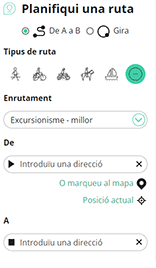Font: Willem Vandenameele
The Basilica of Santa Maria Assunta (also called the Mother Church) is a fourteenth-century basilica dedicated to the Assumption
The first mother church of Alcamo , located on the north side of the San Vito district, was dedicated first to Santa Maria Fonte della Misericordia (1200) and then to the Madonna della Stella. This church still exists under the name Santa Maria della Stella , albeit in a state of abandonment.
In 1332, the residents of the San Vito district moved to the castle of the Counts of Modica, for which a new mother church was built, dedicated to Maria Santissima Assunta in Cielo, on the site of the current mother church. This church was opened for worship in 1402. Of this original building, the bell tower with stained glass windows (restored in 1942), the Chapel of Holy Thorn and the baptismal font remain visible.
Until the first half of the 20th century, the surface of the dome was covered with majolica tiles , later replaced by copper plates. In the Marian Year of 1954, which corresponds to the centenary of the introduction of the dogma of the Immaculate Conception, a 3-meter-high statue of the Madonna was placed on the bell tower.
In the villa next to the basilica there has been a cemetery with mass graves for poor people since the 15th century, an altar where mass was celebrated in times of epidemics
Inside the church there are 38 frescoes painted by Guglielmo Borremans, in particular the three frescoes on the vault.
In May 1969, the Church of Santa Maria Assunta was elevated to the dignity of a minor basilica by Pope Paul VI.
The basilica has 17 chapels : 5 in the left nave, 6 in the right nave and another 6 in the apse area. The chapels used to belong to the Alcamo families, who were responsible for caring for and beautifying them. The chapels were also used as burial grounds by the owning families.
In the left nave of the church there is a door leading to the sacristy and the sacred art museum , founded in 2010. This contains many pictorial, statuary and goldsmith works from the Alcamo churches dating from the period from the 15th to the 19th century,
![]() | | Pública | Alemany • Català • Espanyol • Francès • Italià • Neerlandès
| | Pública | Alemany • Català • Espanyol • Francès • Italià • Neerlandès

Seleccioneu una de les activitats més populars a continuació o perfeccioneu la cerca.
Descobriu les rutes més boniques i conegudes de la zona, acuradament agrupades en seleccions adequades.
Font: Willem Vandenameele
Seleccioneu una de les categories més populars a continuació o inspira't en les nostres seleccions.
Descobriu els llocs d'interès més bonics i coneguts de la zona, acuradament agrupats en seleccions adequades.
Font: Willem Vandenameele
Amb RouteYou pots crear mapes personalitzats molt fàcilment. Defineix la teva ruta, afegeix waypoints o interseccions, planifica parades a punts d'interès o a establiments per menjar i beure i comparteix-ho tot amb els amics i la família.
Planificador de rutes

<iframe src="https://plugin.routeyou.com/poiviewer/free/?language=ca&params.poi.id=8650971&params.language=en" width="100%" height="600" frameborder="0" allowfullscreen></iframe>
© 2006-2025 RouteYou - www.routeyou.com